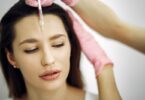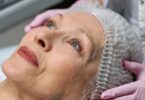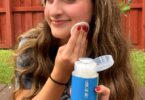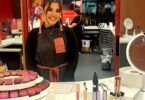Is Beauty a Science?
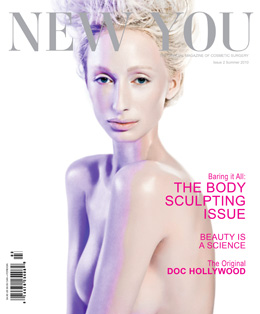
Aesthetic perfection is not unique to the human form. Sunflowers, seashells, classical architecture—these unrelated examples of beauty are explained by what is called ‘the golden ratio.” It is a geometric relationship first discovered by the ancient Greeks, of roughly 1 to 1.6, which they called ‘PHI.’ When objects are designed with this ratio in mind, the form is regarded as aesthetically pleasing.
This “pattern of perfection” is also known as the Fibonacci sequence, named after Leonardo of Pisa (Snr. Fibonacci) who introduced the mathematics of it to the Western world in the 11th century. What Fibonacci realized was that this special sequence is a mathematical succession of numbers in which each number is the sum of the two before it: 0, 1, 1, 2, 3, 5, 8, 13, and so on. The relationship of each number to the next—say, 8 compared to 13—produces this golden ratio.
When the numbers in this sequence are mapped out, the result is a perfect spiral, which some believe is the framework for biological beauty. In fact, many of the spatial relationships in a ‘perfect’ face reflect the golden ratio, for example the width vs. the height of the face, or the width of the eyes vs. the length of the nose, etc.
Of course, no one looks in the mirror and thinks, “If only my golden ratios were better aligned,” but, according to Dr. Stephen Marquardt, a maxillofacial surgeon and founder of Marquardt Beauty Analysis in Huntington Beach, Calif., maybe we should. Dr. Marquardt has spent the last 35 years researching what defines facial beauty. Golden ratios, he believes, are the basis of an ideal, universal facial beauty. In applying golden ratios as a series, Dr. Marquardt has designed the PHI Mask, which he has shown to gauge archetypes of beauty from Nefertiti to Stephanie Seymour.
“As you adjust a person’s features to more closely align with the PHI mask, they become more attractive,” explains Dr. Marquardt. Don’t worry, the adjustments he’s suggesting aren’t as drastic as you might expect. Actually, Dr. Marquardt claims that the majority of us fit the mask fairly closely. “We’ve evolved such that we are, for the most part, attractively neutral or average,” he says. “That’s one of the reasons plastic surgery is so effective, because the changes are so small.”
Beauty in Context
Golden ratios aside, the question we’re all asking right now is, how can I make this work for me?
Dr. Tanuj Nakra, MD, a cosmetic surgeon based in Austin, Texas, knows more than a thing or two about perfectly placed facial features. “Symmetry and proportion are very important in the overall science of beauty and I think patients in general can be naive to these concepts,” Dr. Nakra explains.
To educate patients on the importance of symmetry and proportion in facial beauty, Dr. Nakra uses the rule of the thirds, which divides the face horizontally into three, and the rule of the fifths, which divides the faces lengthwise into five segments each about the width of one eye. Though not as complex as the PHI mask, the plotting of the face in this way helps to acquaint patients with the realities of their face, aging and possible enhancements.
“Once patients get that, a lot of maneuvers become obvious,” says Dr. Nakra. When a 20-year-old woman came into his Austin office seeking a nose job, for instance, a simple assessment using the rules of thirds and fifths revealed that the procedure that would most complement her features was a chin implant. A second patient of Dr. Nakra’s, who complained her cheeks were too big, was surprised to learn that it wasn’t her cheeks at all but her nose and chin that were a little disproportionate. “The results of minor adjustments to these features,” says Dr. Nakra, “were dramatic.”
The purpose of a scientific approach to beauty is not to compare beauties, however, but to consider how we might approach our own ideal. From algorithms and golden decagons to evolutionary biology and imaging models out of a Star Trek episode, the science of beauty offers explanations and a framework for perfection—but does it bring us any closer to a definition? As Dr. Nakra quips, “Once you find that you have a definition of what beauty is, you find some example of beauty that doesn’t fit the rule.” In the end, it is likely this fact⎯the ever-changing, fluidity of beauty⎯that will forever keep its science something a little less than perfect.
About New You
New You Magazine is the official consumer publication of the American Academy of Cosmetic Surgery (AACS), New You is the first line of communication between cosmetic surgery experts and readers. They are a magazine on a mission to help real people meet their personal beauty goals. As such, we provide our readers with honest information about the latest anti-aging technologies, trends, procedures and products in addition to safety, cost, real patient personal experiences and guidance on how to find the right treatment and the right surgeon.
The AACS is a professional medical society of more than 2,500 cosmetic surgeons dedicated to consumer education and safety. All of the doctors referenced in New You articles are members.
For more information about New You, please visit www.newyoumag.com.


